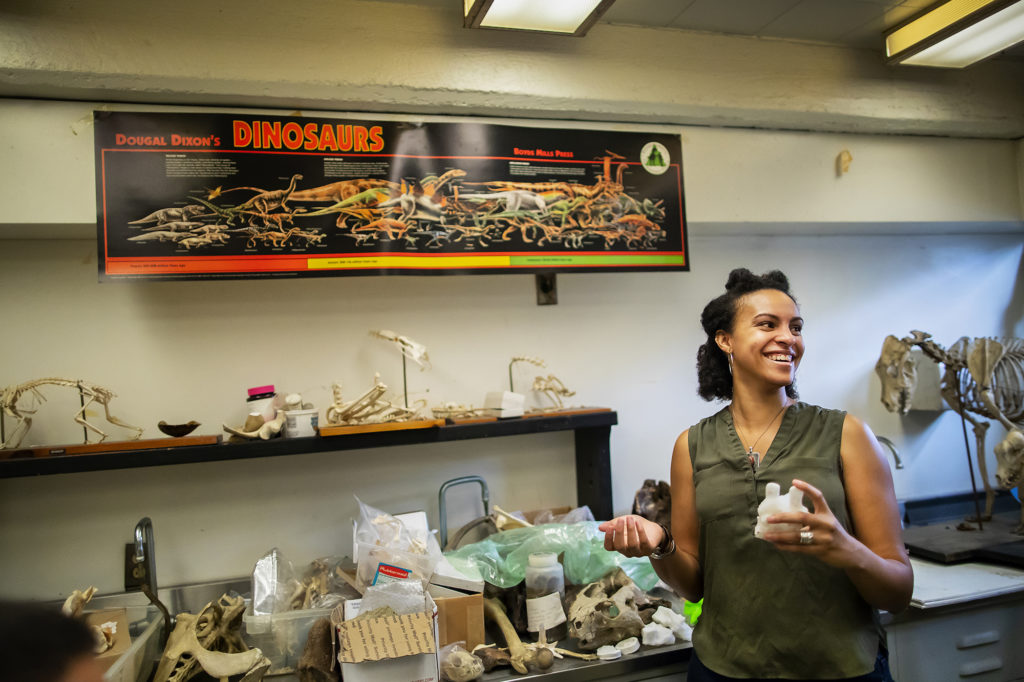
Vertebrate life began in the water, but around 340-360 million years ago, four-limbed creatures, or tetrapods, made the transition onto land. In the years that followed, some species adapted to terrestrial life, while others turned back to the water and readapted to an aquatic lifestyle.
A new study of these early amphibians, published in the journal PLOS ONE and led by Penn paleontologist Aja Carter, suggests that these environmental shifts left an impression—on the shape of the animals’ spines.
“I’m interested in how the shapes of the vertebrae affect how animals move,” she says. “Our findings suggest that, in at least one part of the vertebrae, the shape of the bones correlated with the environment in which the animals were living.” Those associations, Carter says, may be a result of the different physical demands of living on land versus in the water.
Diversity, now and then
Many characteristics distinguish creatures as diverse as humans, dogs, snakes, and even Stegasaurus, but one thing that unites them is the basic shape of their vertebrae.
“They all have this hockey puck-shaped thing, the centrum, fused to these sticky-outy parts, the neural arch, the transverse processes,” says Carter, a paleontologist who earned her doctoral degree from Penn’s Department of Earth and Environmental Science in the School of Arts & Sciences and is now a postdoctoral fellow in the School of Engineering and Applied Science. “But that’s not always how it’s been.”
Continue reading at Penn Today.
